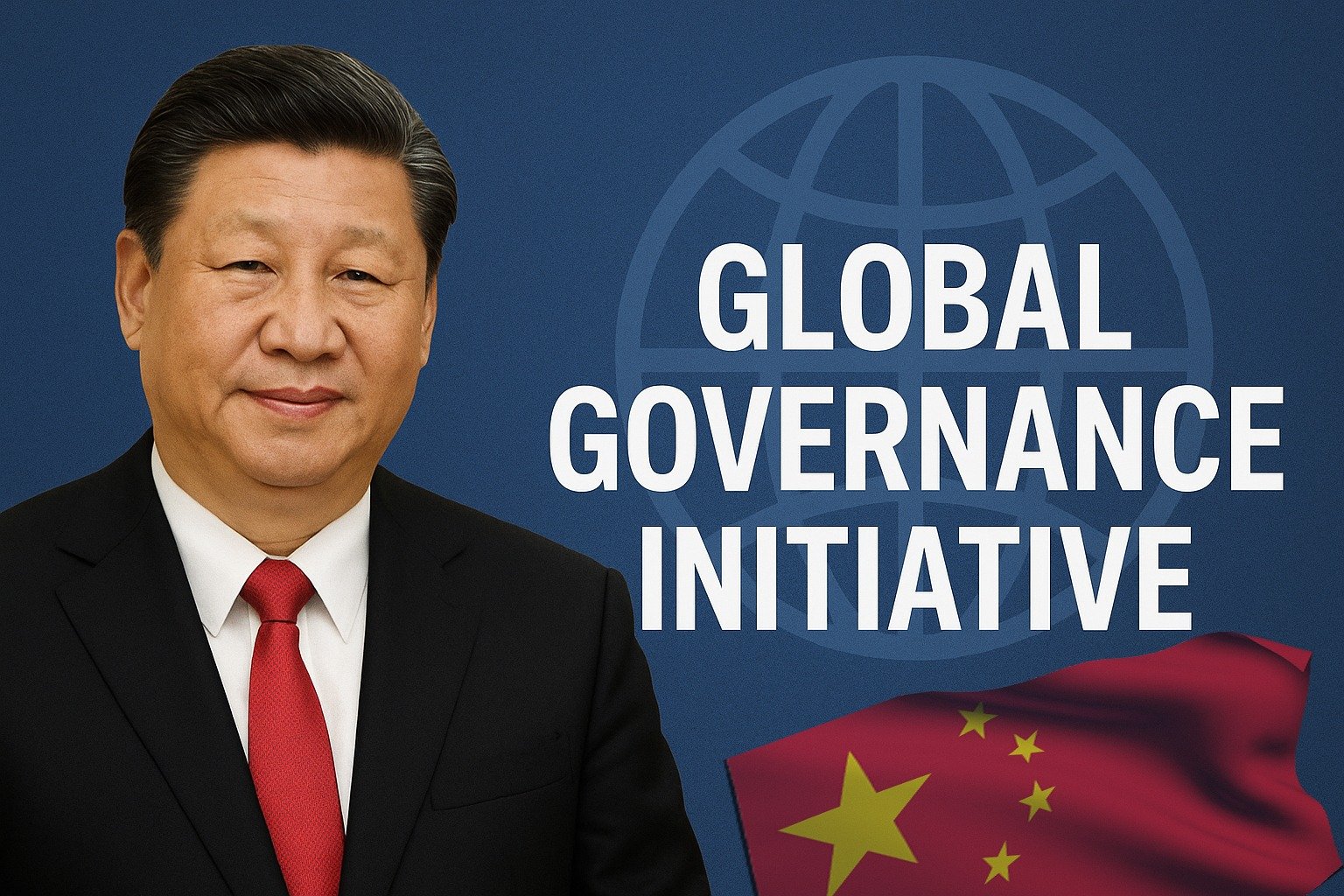In an era where the power to govern, secure and develop nations hinges increasingly on invisible strings of code, we find ourselves entangled in a new kind of war a software war. This silent conflict unfolds not on battlefields with tanks and troops but deep within the architecture of our digital systems often unbeknownst to those who depend on them most.
This work arises from an urgent need to understand and expose a growing strategic threat: the digital colonization of sovereign nations through imported software. As governments embrace smart cities, AI governance and fully digitized economies, they unknowingly surrender critical levers of control to external entities friends for now but potentially foes tomorrow.
This document is not just a theoretical exploration. It is a warning, a strategic framework and a call to arms for sovereign digital independence. Here, the reader will find a clear Threat Equation, real-world analogies and policy implications all converging to make one truth inescapable: the software that runs a nation can also ruin it.
Introduction
In the 21st century, sovereignty is no longer defined solely by borders, armies or flags, it is encoded in lines of software, stored in distant servers and vulnerable to invisible commands. As modern life becomes inseparable from digital infrastructure from public registries to missile guidance systems the unseen hands that write and manage the code behind these systems gain unprecedented strategic leverage.
This treatise begins with a bold but undeniable assertion: imported software is the new Trojan horse of geopolitics. Nations now run on code they do not own, control or even fully understand much of it developed by external actors from potentially volatile or adversarial states. Through a well-defined Threat Equation and penetrating analysis, this work uncovers how seemingly benign lines of code can become tools of surveillance, manipulation or disruption.
The most critical systems financial platforms, defense networks, governance portals are often maintained or updated remotely by foreign vendors. What happens when political winds shift? What if today’s technological partner becomes tomorrow’s strategic threat?
This is not hypothetical. This is happening. And this document is your strategic briefing.
Threat Equation (TE)
In an age where governments, militaries and economies increasingly run on code, the global trade of software has quietly emerged as one of the most profound strategic vulnerabilities of the 21st century. From civilian registries to missile control systems from financial networks to border surveillance platforms, the backbone of national infrastructure is now composed not of steel and concrete, but of algorithms, databases and remote updates.The problem is both invisible and insidious: software is often developed, owned or maintained by external parties, companies and coders located in foreign states.
While this international collaboration has propelled innovation and cost-efficiency, it has also created a digital dependency that places national security at direct risk especially in a world where alliances shift, political interests collide and strategic trust can erode overnight.
Imagine a country, let’s call it Country Y, which imports most of its core software systems from Country X, a long-standing trade and diplomatic partner. For decades, this partnership has flourished. Developers from X build everything from civil databases and e-governance platforms to encrypted communication networks for Country Y’s military. The systems function seamlessly and trust remains high until one day, global power realigns. Country X signs defense pacts with Country Y’s regional rivals, shares intelligence with new allies or changes its ideological course. Suddenly, the question arises: who really controls Country Y’s digital nervous system?
This is not a question of paranoia it is a matter of structural logic. When software is imported, so is control. Code is not inert. It executes commands, transmits data and can be modified or exploited remotely. And while most governments think of security in terms of borders, missiles or economic sanctions, the greatest vulnerability may already lie within their own servers a hidden “Trojan horse” embedded in the lines of foreign-written code.
To assess the magnitude of this risk, we can use what security theorists call the Threat Equation (TE):
TE = (C × D × R) / S
Where: C = Criticality of the system (e.g., civil registry vs. irrigation management)
D = Depth of integration (how deeply the software is embedded across services)
R = Relationship volatility (likelihood of political realignment, alliance breakdown or strategic conflict with the source country)
S = Sovereignty buffer (legal, technical and operational insulation such as code ownership, data localization and independent auditing)
If a nation’s airport systems (C = high), are fully developed and updated remotely by a foreign company (D = high), from a country whose alignment is deteriorating (R = rising), and if the importing nation lacks access to the source code or local control mechanisms (S = low), then the TE becomes dangerously high. This quantifies a scenario where a seemingly invisible relationship can transform into a strategic chokehold.
Historical behaviour suggests that this is not just a theoretical construct. Several cases in recent decades hint at covert infiltration, backdoor data transfers and foreign-controlled remote disruption mechanisms embedded in civilian and military software systems. These risks are further amplified by the use of globally accessible satellite internet networks, enabling real-time command and exfiltration of sensitive data across borders even from closed firewalled environments.
The functional spectrum of such software threats ranges from passive to active manipulation. These include:
- Silent surveillance through backdoors transmitting civil or military data
- Trigger-based disruptions that allow the remote disabling of critical systems
- Predictive monitoring using embedded AI that maps social movements or political unrest
- Behavioural engineering, where insights from stolen data are used to influence elections, policies or strategic decisions
- Data poisoning, whereby false inputs sabotage decision-making processes from within
Now imagine the ripple effects if such vulnerabilities exist not just in one nation but across an entire regional bloc. When software from a single external origin is distributed across multiple states with shared cultural, religious or geographic bonds, the threat compounds. One nation’s compromised system becomes a pathway into others. The interdependency built for convenience now becomes a collective Achilles’ heel.
The most dangerous dynamic, however, is the illusion of permanent friendship. Nations change. Strategic interests evolve. Today’s software-exporting ally may become tomorrow’s silent adversary. And code, once embedded deep within national systems is not easily extracted. Unlike oil pipelines or trade routes that can be physically shut down, software ecosystems are intangible, recursive and self-replicating. They update, adapt and morph in ways that make complete digital disengagement near-impossible without years of rebuilding.
This is why digital sovereignty is no longer a luxury it is a strategic imperative. Nations must treat software imports not as neutral trade goods but as potential security liabilities. Governments should establish source code audit regimes, national development frameworks, data localization policies and above all, dynamic geopolitical risk assessments tied to software architecture.
The doctrine of Digital Non-Alignment must be advanced refusing dependency on a single foreign source for critical systems particularly when that source retains the legal right or technical capacity to control, alter or disable the code in question. Systems should be designed with modularity allowing quick isolation and substitution if a source becomes untrustworthy. Redundancies must be created and native coding ecosystems must be incentivized, even at higher initial costs.
In a world transforming into multi polarity where traditional alliances dissolve and new blocs form based on ideology, economics or technology the velocity of change intensifies the threat landscape. What was once an ally may quickly become an ideological opposite or economic competitor. These rapid realignments mean the Threat Equation must be recalculated not annually but continuously.
Take for instance a state whose software vendors were nurtured under a liberal economic framework but now align with authoritarian governance. The embedded systems may still operate functionally but the political intent behind them may have changed completely. In another case, a friendly nation may be infiltrated by third-party intelligence services, compromising its software exports without direct state involvement.
Looking forward, more revelations are expected to emerge. As forensic audits and international cyber-investigations grow more sophisticated, cases will surface where source code has been exploited to monitor, destabilize or control entire regions. And as countries race toward digital transformation under the banners of smart cities, AI governance or e-statehood, they risk being digitally colonized if precautions are not taken.
The battlefield of sovereignty may no longer involve tanks and drones but authentication protocols, kernel-level vulnerabilities and quietly running background processes. In such a world, trust in software cannot be given unconditionally. It must be earned, verified and constantly monitored. Nations that fail to secure their software supply chains risk not just data theft but digital submission.
For any nation or institution relying on foreign code, the most urgent question is not whether the software works but who is watching it, what it sends and what else it could do when told to.
Banking and Financial Systems: A Digital Trojan horse?
Among the most sensitive and high-stakes sectors vulnerable to software imports is banking and finance. In a globally digitized financial environment, banks routinely rely on external software vendors to build, maintain or upgrade core banking systems, transaction platforms, Know-Your-Customer (KYC) modules, compliance tools, anti-money laundering (AML) mechanisms, mobile apps, and even cryptocurrency integration. These systems, while optimized for user efficiency and compliance, also present a vast surface area for potential exploitation.
When financial software is developed or hosted by foreign entities, the following risks emerge:
- Real-Time Transaction Monitoring: Foreign-coded platforms may embed logic that allows external surveillance of financial flows, client patterns, or interbank communications. This data can be used not just for competitive advantage, but also for geopolitical coercion, sanctions mapping or asset freezing strategies.
- Backdoor Data Harvesting: Critical financial data such as corporate holdings, individual wealth distributions and private investment trends can be harvested quietly and sent offshore. This enables a hostile actor to map the financial structure of a rival state.
- Financial Disruption Scenarios: Hostile updates or embedded triggers could be used to disrupt banking operations during geopolitical crises ranging from locking out domestic users to altering interest calculations, payment logs or digital asset ledgers.
- Regulatory Sabotage: Banking software often interfaces with regulatory frameworks. A compromised system could falsify compliance reports or introduce regulatory violations unnoticed by local authorities.
- Psychological and Market Warfare: Triggering artificial crashes, fake transaction notifications or credit rating manipulations via software vulnerabilities could cause panic, erode investor confidence and destabilize financial markets.
In one hypothetical scenario, Country Z relies on banking infrastructure software built by vendors from Country A. Country A and Z are close partners until tensions escalate due to conflicting regional interests. Without clear digital sovereignty safeguards, Country A could quietly activate exploit paths, monitor elite banking activity, manipulate compliance flags or restrict outward remittance flows, putting immense pressure on Country Z’s economic system.
The Threat Equation again applies:
TE = (C × D × R) / S
In banking, C (criticality) is always high. D (depth) is substantial as core banking and API systems run across all services. R (relationship volatility) may be moderate to high depending on geopolitical factors. If S (sovereignty buffer) is weak due to lack of source code access, absence of national firewalls or outsourced cloud hosting, the TE skyrockets.
The only real protection lies in building or securing national financial tech ecosystems, investing in secure coding capacity, enforcing real-time auditing of foreign software components and maintaining legal and physical control over all data flows. In a multipolar world where economic coercion is rapidly replacing conventional warfare, the battle for sovereignty may be fought not in banks but inside their software.
Conclusion
The real war of the 21st century is not waged through bullets or bombs it is fought in silence through software. This war does not begin with declarations but with downloads, not with invasions but with installations. And in this war, the victors are not those with stronger armies but those with sovereign code.
The Threat Equation presented in this work quantifies what many security experts have only hinted at: digital dependence equals strategic vulnerability. When national infrastructure runs on foreign-built platforms, the importing state becomes a puppet in waiting, its strings controlled by unknown hands, its critical systems open to silent sabotage.
If we fail to recognize software as a tool of sovereignty, we risk losing control over the very systems that define our governance, defense and economy. The time to act is now. Nations must build legal, technical and operational buffers through localized development, open-source mandates, code audits and digital non-alignment strategies.
Let this document serve not just as a warning, but as a manifesto for digital emancipation. The future belongs to those who control their code.

Mr. Tahir Mahmood is a renowned expert in the field of counter-radicalisation, known for his extensive work with various governments to solve complex challenges through knowledge based methods and out of box solutions.

Renowned expert in the field of counter-radicalisation, known for his extensive work with various governments to solve complex challenges through knowledge based methods and out of box solutions.










